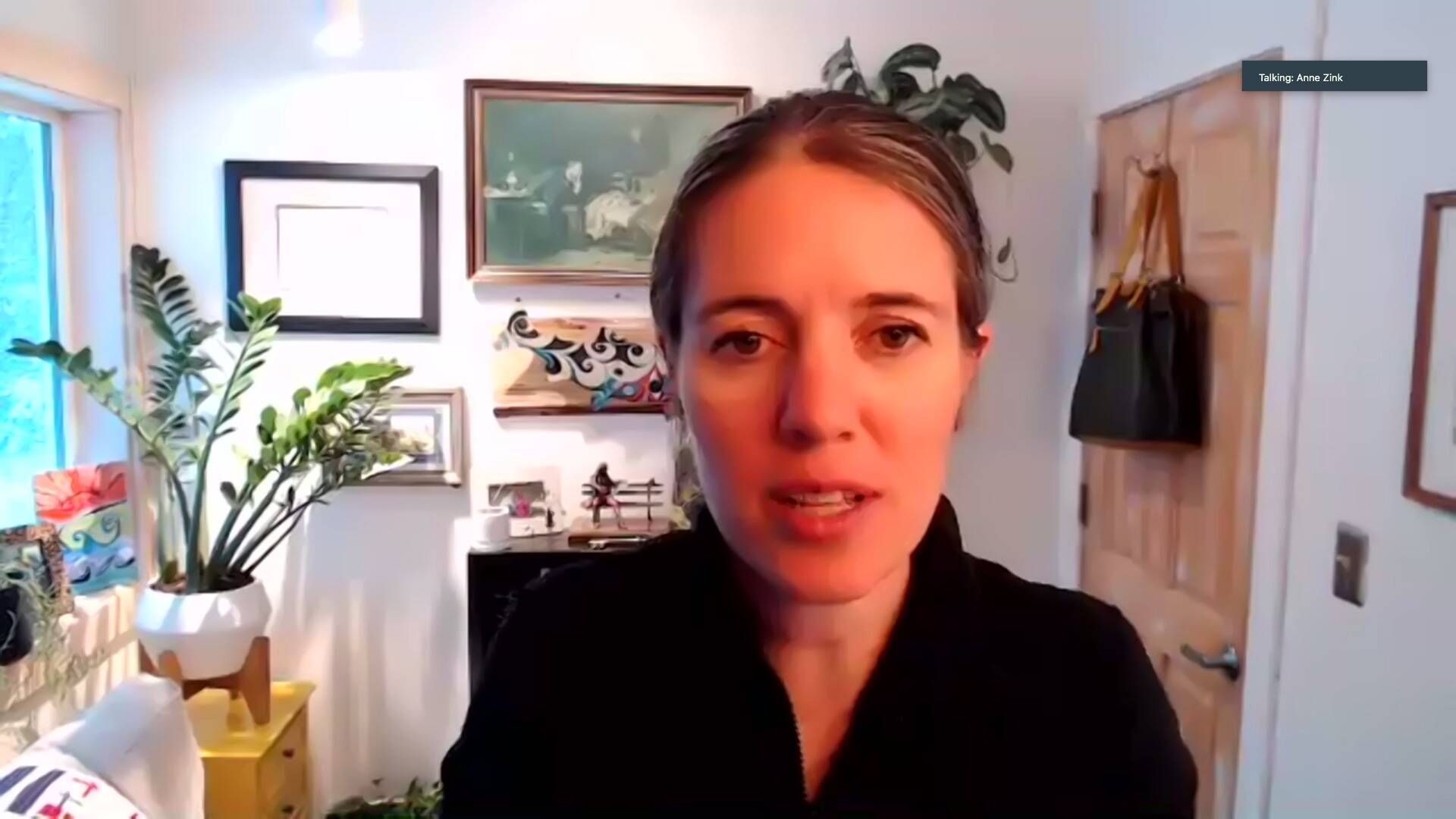State health officials said Monday that more was unknown than known about the omnicron variant of the coronavirus, but emphasized the importance of maintaining COVID safety measures and getting vaccinated.
“There have been a lot of meetings over the weekend, and throughout the day, with multiple different teams within epi and labs, and public health, briefing us all on what is known and what is not known,” Anne Zink, Alaska’s chief medical officer, told reporters Monday. “I will first start by saying much more is not known about this virus than what is known.”
The variant, which was first identified in South Africa, was identified as a “variant of concern” by the World Health Organization on Nov. 26.
No cases of the omicron variant had been identified in the United States as of 3 p.m. on Monday, but concerns about “suggest(ed) increased transmissibility” prompted the U.S. Centers for Disease Control and Prevention to strengthen its recommendations about COVID-19 booster shots. The agency’s position is now that everyone 18 and older “should” get a booster shot, either when they are six months out from their initial Pfizer or Moderna series or two months after their initial Johnson & Johnson vaccine.
“I strongly encourage the 47 million adults who are not yet vaccinated to get vaccinated as soon as possible and to vaccinate the children and teens in their families as well because strong immunity will likely prevent serious illness,” wrote CDC Director Dr. Rochelle Walensky in a media release Monday. “I also want to encourage people to get a COVID-19 test if they are sick. Increased testing will help us identify Omicron quickly.”
Zink said it is too early to know for sure whether omicron is more transmissible, whether it makes people more or less sick, how effective vaccines are against it or what treatment will work.
The omicron variant has been identified both in people who have been vaccinated against COVID-19 and in people who have been previously infected, which Zink said is “of concern.” What remains known, she said, are tried-and-true mitigation measures such as wearing a mask, social distancing, keeping social circles small and good ventilation.
While Zink said vaccines are still likely to work very well against omicron, it is not clear precisely how well.
“Get vaccinated and boosted if you are 18+,” Zink shared in a Monday thread about omicron on Twitter. “Even imperfect protection is better than little to no protection.”
Dr. Jayme Parker, of the Alaska State Virology Laboratory, said during Monday’s press conference that the omicron variant is one of the “most divergent” variants she’s seen, but that there are enough similarities between it and other variants that it can still be detected in a laboratory. Parker said that currently, 99.9% of what the state lab is sequencing are delta variant cases.
“There’s one particular PCR assay that shows pretty distinctly one particular mutation of this variant, and it’s going to stand out amongst other variants that we are testing at the state public health labs,” Parker said.
President Joe Biden urged Americans not to panic about the omicron variant on Monday and similarly reiterated COVID-19 vaccination, booster shots and masking in indoor public spaces as a way to slow virus spread. Biden already announced that travel to the U.S. from eight countries in southern Africa would be restricted in response to the omicron variant, effective Monday.
Scientists have long warned that vaccination rates impact virus mutations. The creation of “vaccine deserts” by a hoard of vaccine resources by wealthy nations, the Associated Press reports, gives the virus more opportunities to mutate, which prolongs the COVID-19 pandemic for all parts of the world.
It’s the specific mutations of the omicron variant that has health officials concerned, particularly as it relates to the virus’ spike protein — the crown shaped parts that give the virus its “corona” name. It’s those spiky parts, Zink said Monday, that the virus uses to enter a person’s cells and toward which COVID-19 vaccines and other treatments are targeted.
Those spiky parts are also where omicron’s mutations are found. Parker said there are between 50 and 54 mutations across different variant particles of the omicron, between 30 and 32 of which are in the spike proteins.
Ultimately, Zink said that the number of mutations seen in the omicron variant marks the biggest genetic shift ever during the course of the COVID pandemic and that everyone has a lot to learn about it. For example, Parker said, 20 omicron mutations that need to be investigated further.
“There’s a lot that we still need to learn about this variant, but it is highly divergent,” Parker said. “It’s clearly an animal of its own.”
More information about the omicron variant can be found on the CDC’s website at cdc.gov.
Reach reporter Ashlyn O’Hara at ashlyn.ohara@peninsulaclarion.com.

